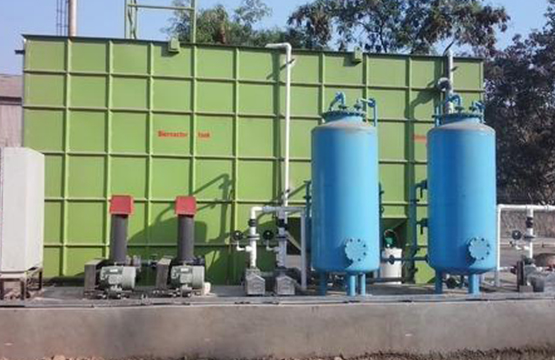 Sewage treatment plant India for municipal & government is a process of Sewage collection from city and other inhabited areas, through interconnected network of sewerage lines and disposalto centralize sewage treatment facility to protect public health and prevent diseaseas well as water pollution from sewage contaminants.
Sewage treatment plant India for municipal & government is a process of Sewage collection from city and other inhabited areas, through interconnected network of sewerage lines and disposalto centralize sewage treatment facility to protect public health and prevent diseaseas well as water pollution from sewage contaminants.
Apart from public health and pollution norms, STP facilities has also becoming new source of water which can be used for irrigation, horticulture, industrial and many other non-potable purpose. Recycling of sewage treated water directly reduce consumption of fresh water and help to come out from water scarcity problem.
Sewage treatment is the process of removing contaminants from domestic wastewater called “Sewage” coming from various part of city and inhabitant area, which includes physical, chemical and biological processes to produce an environmentally safe fluid waste stream (or treated effluent) and a solid waste (or treated sludge) suitable for disposal or reuse (usually as farm fertilizer).
Various technologies from Oxidation pond to Activated sludge process and advance MBBR to MBR process has been adopted by municipal and government bodies to provide effective treatment of domestic sewage water depending upon the uses of treated sewage water which formulate as sewage treatment plant india.
AO2 is a leading in sewage treatment plant india, EPC contractor; provide turnkey solution to municipal bodies from concept to design, supply, install, commissioned and operation & maintenance of Sewage Treatment facility with the combination of various technologies at the most comprehensive, cost-effective and reliable practises.
AO2 is a leading manufacturer of sewage & effluent Treatment Plants for the industrial, Government and Municipal . With a decade old experience, AO2 has successfully executed over 98 installations in industries, Government, hotels, and Municipal becoming a preferred supplier of Sewage Treatment Plants and Zero Liquid Discharge Plant and Effluent Treatment Plant.
AO2. Manufacturer,exporter,trader,supplier of all type of sewage treatment plant India best quality sewage treatment plants manufacturers from Ahmedabad, send requirement detail of sewage treatment plants, effluent treatment plants etc.
Coagulation / Flocculation
During coagulation, liquid aluminium sulfate (alum) and/or polymer is added to untreated (raw) water. When mixed with the water, this causes the tiny particles of dirt in the water to stick together or coagulate. Next, groups of dirt particles stick together to form larger, heavier particles called flocs which are easier to remove by settling or filtration.
Sedimentation
As the water and the floc particles progress through the treatment process, they move into sedimentation basins where the water moves slowly, causing the heavy floc particles to settle to the bottom. Floc which collects on the bottom of the basin is called sludge, and is piped to drying lagoons. In Direct Filtration, the sedimentation step is not included, and the floc is removed by filtration only.
Filtration
Water flows through a filter designed to remove particles in the water. The filters are made of layers of sand and gravel, and in some cases, crushed anthracite. Filtration collects the suspended impurities in water and enhances the effectiveness of disinfection. The filters are routinely cleaned by backwashing.
Disinfection
Water is disinfected before it enters the distribution system to ensure that any disease-causing bacteria, viruses, and parasites are destroyed. Chlorine is used because it is a very effective disinfectant, and residual concentrations can be maintained to guard against possible biological contamination in the water distribution system.
